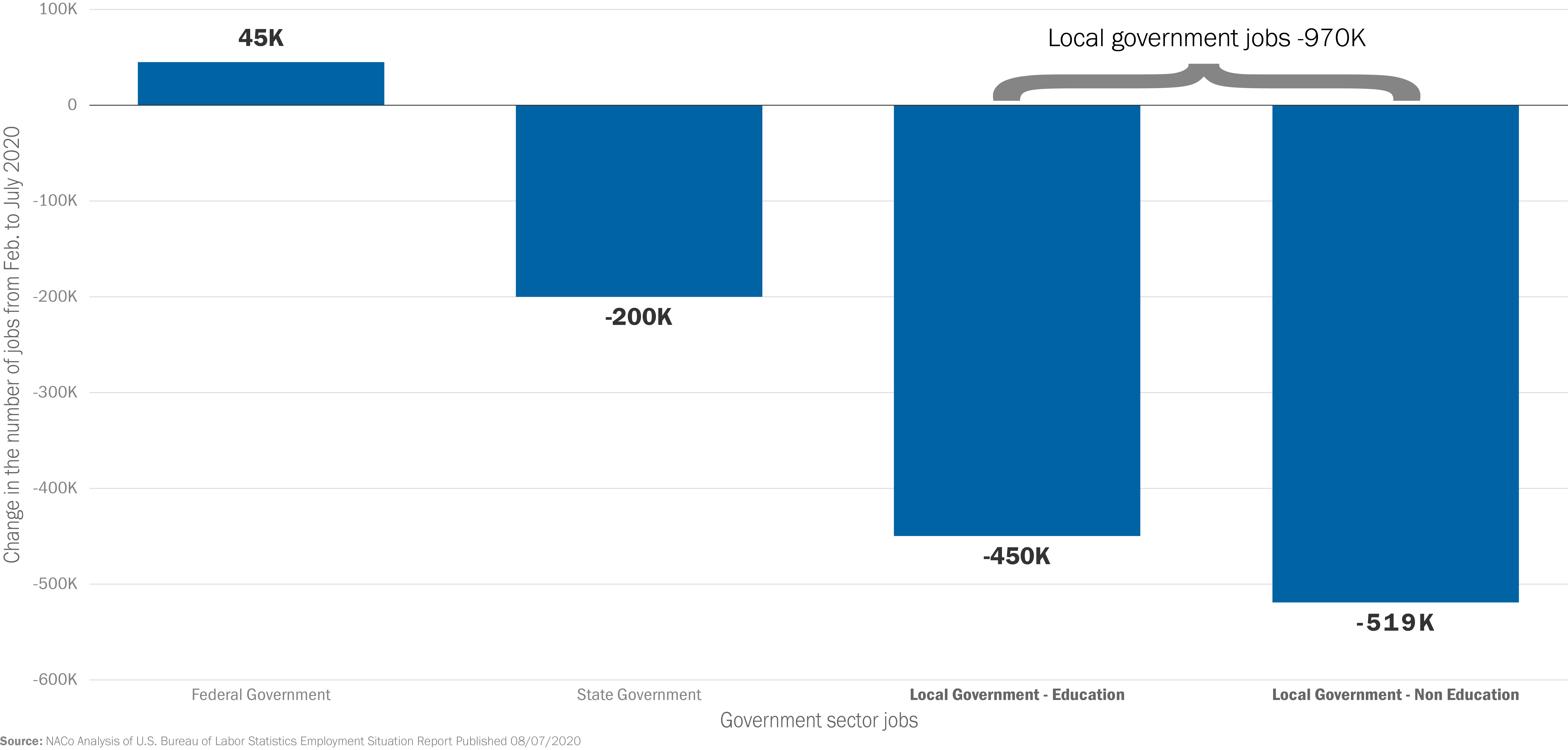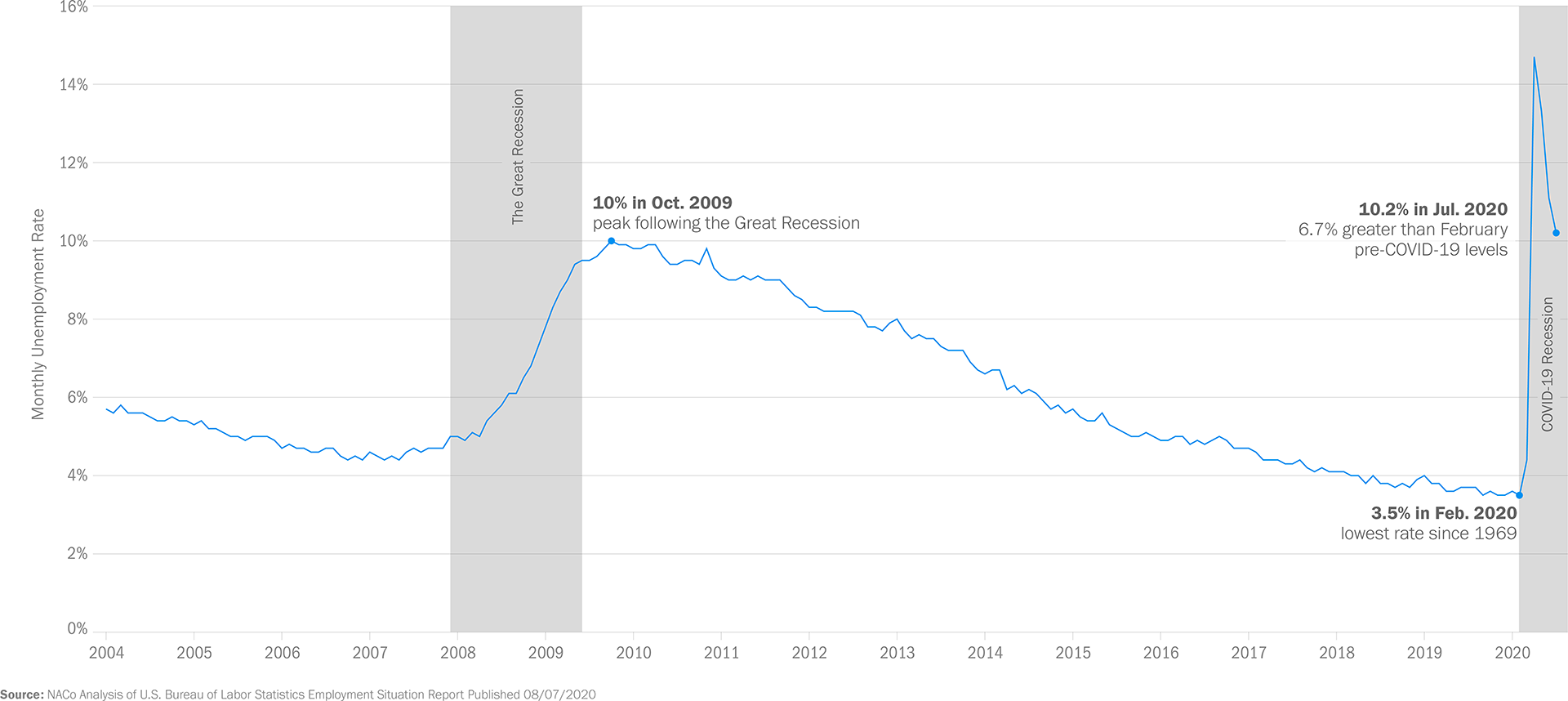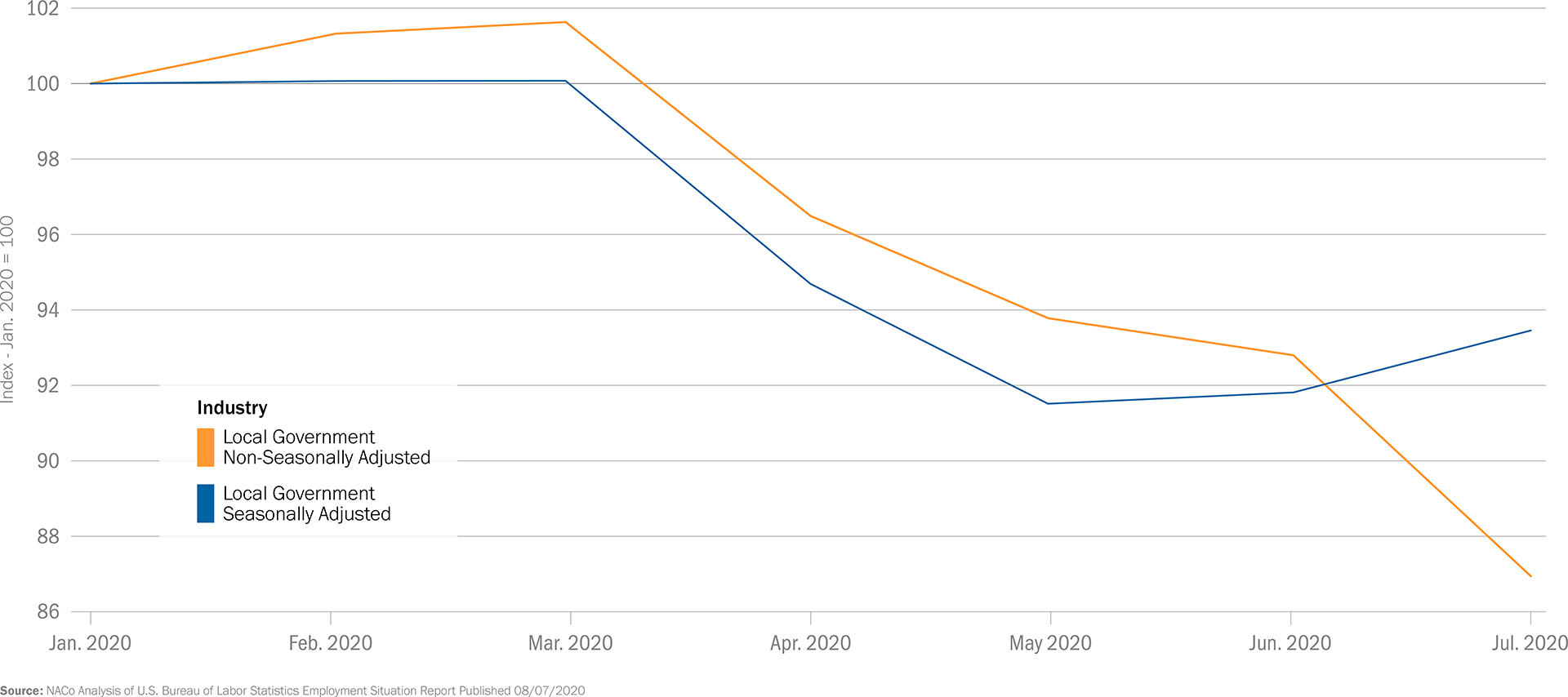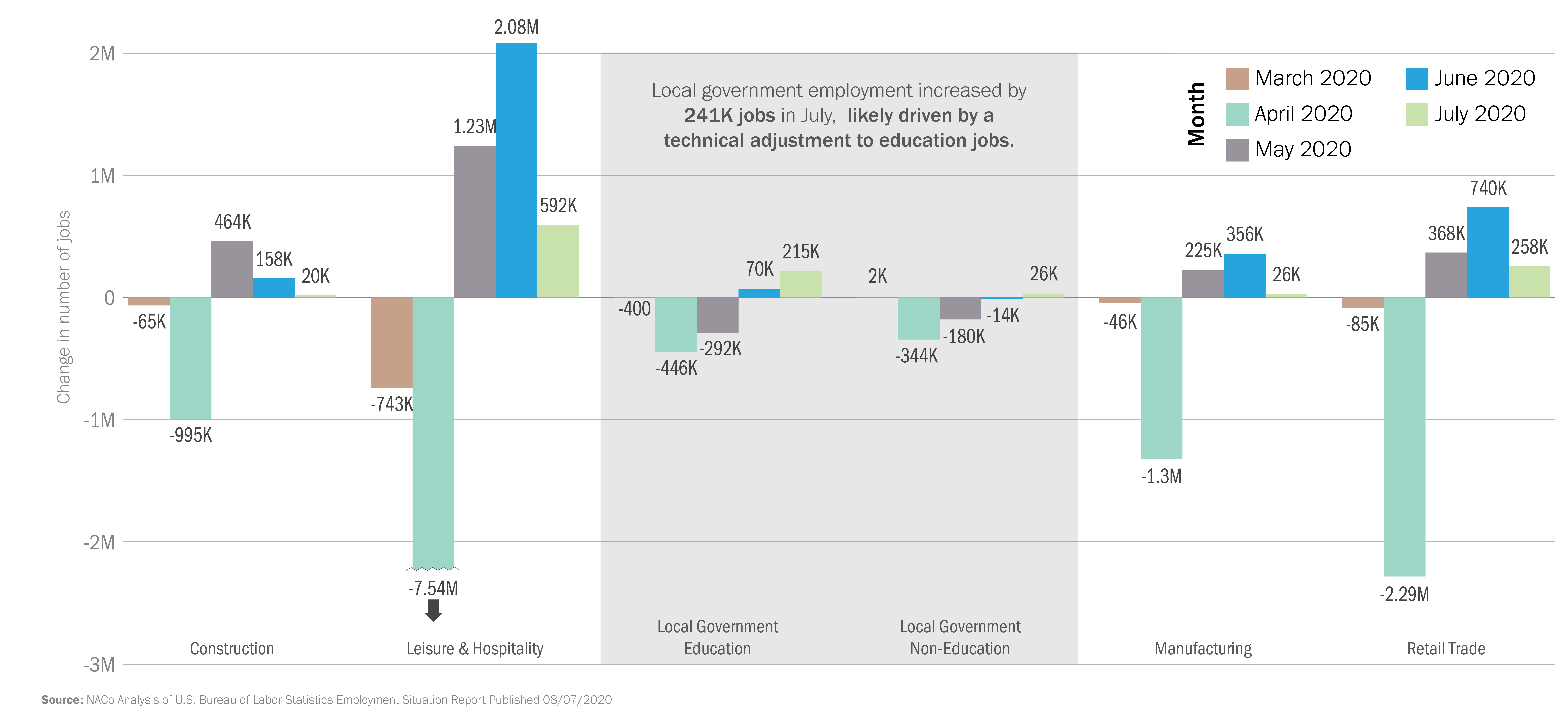The raw, unadjusted numbers, reveal a different narrative for local government employment: July most likely marks the fourth consecutive month of decline in local government jobs. The unadjusted numbers show that local government jobs in fact decreased by 753,000 in April, 397,000 in May, 144,000 in June and another 858,000 in July, totaling 2.1 million jobs lost. Although the unadjusted total of 2.1 million likely exaggerates the decline by including typical fluctuations in education jobs, a gain in July may not be the most accurate representation of the local government employment situation.
UNADJUSTED FIGURES SHOW FOUR-MONTH DECLINE IN LOCAL GOVERNMENT JOBS
Total Local Government Employment, Seasonally Adjusted vs. Unadjusted, Feb. – Jul. 2020
Even if we maintain consistency with the adjusted numbers, local government employment still remains 970,000 jobs below its February level.
Non-education employment for local government grew by a mere 25,700 jobs – a 0.4 percent increase – and remains 515,300 jobs below its February level. Non-education jobs in local government include healthcare practitioners, social workers, law enforcement officers, court clerks, sanitation workers, librarians, transit employees, utility workers, maintenance crews and construction workers, which collectively provide essential services and resources to communities.
LOCAL GOVERNMENT EMPLOYMENT NEARLY 1 MILLION JOBS BELOW FEBRUARY LEVEL
Change in number of jobs from Feb. – Jul. 2020, seasonally adjusted

While local government employment continues to struggle, other major job sectors are maintaining their slow recovery course, albeit more slowly than in May and June. Nevertheless, every major employment sector remains substantially lower than its February 2020 level:
- Leisure and hospitality added 592,000 jobs (accounting for about one third of the total nonfarm employment increase), but remains nearly 4 million jobs below its February level.
- Retail trade added 258,000 jobs, but remains 913,000 jobs below its February level
- Professional and business services added 170,000 jobs, but remains 1.6 million jobs below its February level
- Health care added 126,000 jobs, but remains 797,000 below its February level
- Construction, transportation and every other major sector also added jobs in July, with the exception of mining, which lost another 7,000 jobs. All remain below their February levels.
EMPLOYMENT GAINS IN JULY DO NOT OFFSET LOSSES SINCE FEBRUARY
Monthly change in number of jobs by industry, Mar. – Jul. 2020, seasonally adjusted
The recovery process has been uneven across the nation. The unemployment rate declined for all major worker groups in July but remained uneven between them.
- White workers had the lowest unemployment rate (declining from 10.1 percent to 9.2 percent), followed by Asian workers (with the largest decrease of 1.8 percentage points, from 13.8 percent to 12 percent).
- Hispanic workers again saw a large decrease in the unemployment rate (1.6 percentage points), causing the unemployment rate for Hispanic workers (12.9 percent) to hover just above that of Asian workers (12 percent).
- Black or African American workers saw only a nominal decrease (0.8 percentage points) and remained with the highest unemployment rate (14.6 percent).
UNEMPLOYMENT RATE FURTHER DECREASES AS SLOW, UNEVEN RECOVERY CONTINUES
U.S. Unemployment Rate, 2004-2020

Overall, the July jobs report from BLS discloses a national workforce in the beginning phases of a slow, uneven recovery process, and still far from pre-pandemic levels.
- The increase of 1.8 million jobs in July is the smallest increase in total employment since the economy began reopening in May, leaving the U.S. economy with nearly 13 million jobs less than in February 2020.
- And July’s unemployment rate of 10.2 percent remains 6.7 percentage points higher than February’s unemployment rate of 3.5 percent and roughly on par with the unemployment rate at the peak of the Great Recession.
Job losses are only a sliver of the full story. The U.S. Bureau of Economic Analysis (BEA) released a review of national economic output (GDP) in the second quarter of 2020, and it revealed the largest quarter-to-quarter drop in GDP on record (32.9 percent). This drop comes after an initial decline of 5 percent in the first quarter. The BEA report notes that the state and local government spending decline contributed to the sharp economic drop – which comes as no surprise to counties feeling the strain of the pandemic in both local budgets and workforces.
The landscape of the nation: The Bureau of Labor Statistics (BLS) collected its data for the June jobs report during the week beginning July 12th through July 18th. During that time, COVID-19 cases in the U.S. topped 3.5 million and the number of COVID-19 related deaths rose above 125,000. 3,020 counties (98.4 percent) had at least one COVID-19 case, and 2,040 counties (66 percent) had at least one COVID-19 related death.














